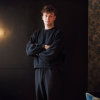
Virgin Media O2 launches summer online safety campaign
Virgin Media O2 and Internet Matters spotlight the importance of having conversations about online safety and starting them early

We ask industry leaders to have their say on how the industry can harness the benefits of AI while preserving their unique creative talents.

Creativity has always been a defining characteristic of humanity, separating us from machines and computers. However, with the rapid advancement of artificial intelligence (AI) technology, the line between human and machine creativity is starting to blur.
AI has already made significant strides in the creative field. For example, AI-generated art has been displayed in galleries and museums, and AI-generated music has been composed and performed. Additionally, AI has been used to create advertisements and even entire movies.
One of the most significant advantages of AI in the creative field is its ability to generate a vast amount of ideas quickly. AI algorithms can analyze vast amounts of data and create unique combinations that humans might not have considered. This means that AI can help humans overcome creative roadblocks and generate new ideas and solutions.
However, some argue that AI-generated art and music lack the emotional depth and complexity that comes from human creativity. While AI can analyze and replicate patterns and styles, it can’t replicate human emotion or experience.
Another concern is that AI could replace human creativity altogether, leading to a world where machines create all forms of art and music. This would be a significant loss for humanity, as art and music are essential parts of our culture and identity.
However, others argue that AI and human creativity can coexist, with AI serving as a tool to enhance and augment human creativity. AI can take care of repetitive tasks, allowing humans to focus on the more creative and emotional aspects of their work.
Furthermore, the use of AI in the creative field can lead to new and innovative forms of art and music. AI-generated art and music can challenge our traditional notions of creativity and expand our understanding of what it means to be creative.
In conclusion, the relationship between creativity and AI is complex and multifaceted. While AI has the potential to revolutionize the creative field, it’s essential to remember that human creativity is irreplaceable. The key is to find a balance between human and machine creativity, allowing both to flourish and complement each other.
That introduction was written by ChatGTP, but does it have all the answers? We asked industry leaders to have their say when it comes to considering the future of creative teams in an increasingly AI-driven world.
While the integration of AI technology into creative processes has the potential to drive innovation and improve efficiency, it also raises concerns about the impact on human creativity and the need for a human touch. With this in mind we asked industry leaders to explore how creative professionals can harness the benefits of AI while preserving their unique creative talents to unlock new levels of innovation and creativity.

Conversations around Artificial Intelligence and its capabilities have broken the internet over the past few months with seemingly as many voices shouting ‘hero’ as shouting ‘villain’.
We are standing on the edge of change, aware that the potential of AI is vast but it is still as yet somewhat unknown. But it’s important for creatives to remember the power we hold as humans above AI: we are both maker and manager.
As an assistant, AI is an extra pair of hands to handle the laborious tasks that clog our to-do lists, but it can only do so much. Fundamentally it mimics what already exists. With generative AI, such as ChatGPT, it is an average of the average, built from patterns of occurrence in existing text. Like the word itself suggests, creativity is about creating, not emulating.
With the adoption of AI set to rise in coming years, the modern creative team needs to prove to the world that human creativity is something that cannot be replaced. And, to do so, they must upgrade their humanity. They must find their unique voice among millions of others, they must avoid stale idea formats to always bring something new and delve into their heart to truly touch those of others.

The robots are coming for our jobs, but I believe they’re here to help - we invented AI to automate processes and boost productivity, and new tools mean we have more time for free creative thinking.
If you’ve ever suffered from blank page syndrome, AI is the perfect tool to create a ‘jumping off point’.Type your brief into ChatGPT or Midjourney to generate quick and fast ideas; whether they’re all wrong or something to build on, you’ve overcome the first hurdle. AI can also offer a broader world-view, having been trained on large data-sets, it might just offer a surprising perspective you hadn’t thought of.
Creatives who are worried about how fast AI can generate content should try and shift their perspective and adopt it as a new tool to be harnessed; AI will always need us, it can’t be inspired, it must be prompted. If you can learn to command and master the machine, you might find yourself with more time on your hands to review, refine and craft the results.

AI and the death of human creativity are two concepts that have been spoken about in tandem since the launch of ChatGPT and other AI programmes ruffled feathers in the industry. Understandably so - it’s a relatively new concept - and newness is often scary. But AI doesn't necessarily have to be feared - the opportunity is absolutely there to enhance creative work with the generative potential of AI.
We know that the potential of AI is vast. But we also know that AI systems always look at what's happened in the past, to churn out suggestions for the future. So, if businesses were just to rely solely on the idea generations of AI - there would be no room for innovation, and new ideas simply would not exist. AI cannot replace the truly impactful market research that informs any successful creative campaign.
AI also cannot replace human creativity. But it can assist with it. Use it as a springboard for ideas, train it to undertake routine or monotonous tasks, or bring it in to research past projects. If used advantageously, AI has the potential to give time back to creatives, creating space for truly innovative thinking. So fear not - the true magic will still always be where creative people come up with real world ideas and collaborations. Creative teams won’t die in 2023.

The speed at which AI has integrated into the creative's toolkit is undeniable, and it only looks set to become even more enmeshed.
It is a legitimate creative application that needs to be mastered and employed with a skilled, human, touch. But while AI is fast and efficient, it can only regurgitate content that already exists. By collating widespread information from across the internet, AI can sift through, spot trends and mimic ideas. However, this isn't creativity in action.
To produce the kind of innovative thinking that most of our industry would consider to be truly creative, a human lens needs to be applied to the inputs, and any of its output. Chat GPT, for example, requires instructions to produce content –the more unique these rules and requirements are from the individual, the more exciting the output will be.
Away from the clamour and the headlines, AI is simply another tool – a useful springboard for ideation – offering a wealth of information and inspiration that creative teams can then refine, adapt, and even lean away from, all as the creative lead chooses.

The recent explosion of visual AI tools presents an exciting opportunity - especially now that we are beginning to recognise how it can improve the efficiency and output of creative professionals. But in the same breath - I can understand why there are concerns that AI will replace human creativity, leading to a loss of originality and artistic vision.
We already exist in a society which undervalues the arts and creative career paths, so it's important that we nurture talent and ensure jobs exist for those who deserve them. However, handled appropriately, AI tools can enhance creative workflows without reducing personnel. Talented, creative minds will always be required to build new ideas which aren’t restricted to the paths we’ve already travelled. Machine learning, however, can only travel those paths again and again, based on what already exists rather than innovating what could exist in the future.
Professionals should look to develop a hybrid approach that leverages the strengths of both AI and human creativity. Use AI to free up time by automating repetitive tasks, such as image or video editing. Or use it to generate ideas to spark creative discussions. It can be a valuable part of the process if used correctly - and it just might give creative teams back some time to get their creative juices flowing.
So, instead of being scared of what the future of AI means for our industry, face the fear, and get involved. Find a sweet spot that gives you the best of both worlds. Creative teams are here to stay, and embracing technology can make them stronger.
Looks like you need to create a Creativebrief account to perform this action.
Create account Sign inLooks like you need to create a Creativebrief account to perform this action.
Create account Sign in